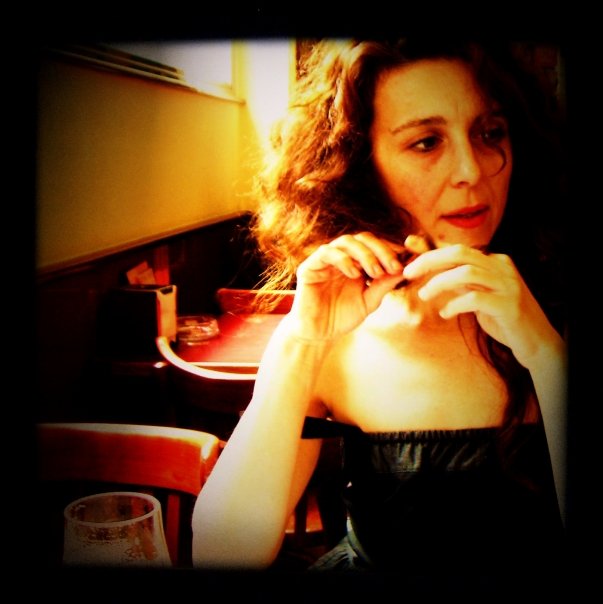How to Use Writing as a Form of Meditation
Do you use writing as a form of meditation? I do! Writing as a form of meditation or meditative writing has become a daily morning practice. When you approach writing as a form of meditation, you are invited to stay in the present moment. Writing as a form of meditation invites you to pay attention and enhances mindfulness.
There are so many creative ways to use writing as a form of meditation and in this post, I’ll share one of my favourite practices.
All you need is a poem, a favourite pen, a favourite journal, and a quiet, comfortable space. (Although, really, as with all meditation, you can do this on the move and on a mobile device!)
So, let’s get started!

“Real meditation…is a deeper form of attention.”
・ David Whyte ・
What is Meditative Writing?
The practice of meditative writing typically involves writing with pen and paper, but you can also do it on a digital device.
Meditative writing is a mindfulness practice during which you use your writing (instead of your breathing, for example) as the anchor of your attention.
The intention of meditative writing is to help you remove mental obstacles, encourage mindful concentration, and enhance your creative practice. The practice of meditative writing is a timed practice and this helps with reducing distraction and reducing the temptation to ruminate (or overthink) on the blank pages of a journal or computer screen.
How to use writing as a form of meditation
Here is my guide to using writing a form of meditation. This specific approach starts with a poem.
What you will need
This practice is your personal practice and you will develop a preference for the tools and spaces in which you will use writing as a form of meditation.
Here are my preferences:
- I like to write longhand with a Lamy fountain pen and a Clairefontaine journal.
- I like to sit on the floor, my back supported by the edge of the couch, my dog, Henrietta, there behind me on the couch (looking over my shoulder, it seems, sometimes).
How to meditate with writing, and a poem
Start with a poem.
- Start with a poem. A short poem. Maybe a Mary Oliver from her A Thousand Mornings or a David Whyte from River Flow. Here is a collection of my favourite poems for meditative writing practice. I compiled these especially for my daily morning meditative live sessions on Instagram Live for the Stay-At-Home! Lit Fest, Monday 26 April to Sunday, 9 May 2021.
- Sit quietly with the poem. Just take your time and look over it. Note your breathing. Note how you feel in your seated position. Shift around to find the most comfortable spot.
- Go back to the poem. Read the poem out loud, or in a whisper, or in your head.
Start copying the poem word-for-word
- Now, start to copy the poem. Literally, I mean, copy the poem word-for-word. If you are writing in a journal, start with a blank double-page spread, and start copying on the left-hand-side page of the journal.
- As you start copying, pay attention to your breathing. You might find that you breathe and write in syncopation. You might find that you lose focus or want to rush or find the copying boring. If so, that’s fine, simply accept that your mind will entertain all sorts of thoughts, and then just come back to the poem and the task of copying.
Focus, breathe, pay attention as you are copying
- Focus again. Breathe. Stretch if you need to. Then, back to the page. Pay attention to each word of the poem and then pay attention to how you are copying out and writing each word, each letter, each stroke. Pay attention to the sound your pen makes across the page. Is there a rhythm? There is absolutely no need to adjust to a rhythm, just pay attention.
- Focus on forming the letters and note your breath again. If you notice that you’ve lost attention, or if you notice that you are forming an opinion or a judgement or a response or an expectation to the poem, that’s okay, now come back to the poem and simply focus on copying out the words. Judgements and expectations are just thoughts and they come and go. You can choose what to pay attention to during this session.
Continue with meditation and writing freely
Okay, once you’ve copied the poem, you might read it again. Stretch, shift your body to get comfortable, breathe in and out. Read, whisper, or just silently pay attention to the poem you’ve copied out.
Set a timer for your meditation with writing
Set a timer for 15 minutes. According to James Pennebaker, the Canadian psychologist who first used expressive writing for therapy, we should limit our freewriting to 15 or 20 minutes.
Now, on the right-hand side page of the journal, this is your invitation to begin free-writing.
So, start by imitating the poem at first.
Maybe take the first few words and copy them again until you are ready to add your own words, thoughts, feelings, sensations, sounds, and scenes.
Then, start to freewrite quickly, without thinking, until the timer sounds.
At that point, pause, take a few deep breaths, stretch.
Then quickly read over your writing. You may like to underline or circle any phrases or sections that are particularly striking or amplified.
We can make a note of these as prompts for future writing sessions. Or simply let them be.
Finally, go for a solo walk to maybe ponder your thoughts a little more until you, finally, release them and reset.
I hope you enjoyed this. Let me know if you try this method and please do share any writing or snapshots of your journal pages!
Here is another guided meditative writing session for next time.



